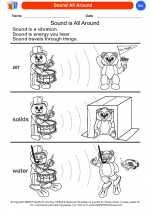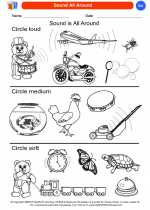Hibernation
Hibernation is a fascinating behavior observed in some animals during the winter months. It is a state of inactivity and metabolic depression that allows animals to conserve energy and survive the cold temperatures and scarcity of food during the winter.
Key Points to Remember
- Hibernation is a seasonal behavior.
- Animals enter hibernation to survive the cold and scarcity of food in winter.
- Hibernating animals lower their metabolic rate and enter a state of dormancy.
- Common hibernating animals include bears, bats, groundhogs, and some species of rodents.
- Hibernating animals rely on stored body fat for energy during hibernation.
- During hibernation, animals may exhibit reduced heart rate, breathing rate, and body temperature.
- Hibernation allows animals to awaken in spring with renewed energy and resources for reproduction and foraging.
Study Guide
Here are some questions and activities to help you understand the concept of hibernation:
Questions:
- What is hibernation?
- Why do animals hibernate?
- What physiological changes occur in hibernating animals?
- Can you name three animals that hibernate?
- How do hibernating animals survive without food for long periods?
- What are the benefits of hibernation for animals?
Activities:
- Research and create a presentation about a specific hibernating animal, including its habitat, diet, and hibernation behavior.
- Draw a diagram illustrating the physiological changes that occur in a hibernating animal's body.
- Visit a local wildlife center or zoo to observe and learn about hibernating animals.
- Write a short story or draw a comic strip depicting a day in the life of a hibernating animal.
By studying hibernation, you can gain a deeper understanding of how animals adapt to survive in their environments, and appreciate the incredible strategies they use to cope with seasonal changes.
.◂Science Worksheets and Study Guides Kindergarten. Pushing, Moving, Pulling
Coloring Worksheet How heavy
How heavy  Coloring Worksheet
Coloring Worksheet How heavy
How heavy  Coloring Worksheet
Coloring Worksheet How Things Move
How Things Move  Coloring Worksheet
Coloring Worksheet How Things Move
How Things Move  Coloring Worksheet
Coloring Worksheet Light and Heat
Light and Heat  Coloring Worksheet
Coloring Worksheet Light and Heat
Light and Heat  Coloring Worksheet
Coloring Worksheet Magnets
Magnets  Coloring Worksheet
Coloring Worksheet Magnets
Magnets  Coloring Worksheet
Coloring Worksheet Pushing and Pulling
Pushing and Pulling  Coloring Worksheet
Coloring Worksheet Pushing and Pulling
Pushing and Pulling  Coloring Worksheet
Coloring Worksheet Simple Machines
Simple Machines  Coloring Worksheet
Coloring Worksheet Simple Machines
Simple Machines  Coloring Worksheet
Coloring Worksheet Sink and Float
Sink and Float  Coloring Worksheet
Coloring Worksheet Sink and Float
Sink and Float  Coloring Worksheet
Coloring Worksheet Sound All Around
Sound All Around  Coloring Worksheet
Coloring Worksheet Sound All Around
Sound All Around  Coloring Worksheet
Coloring Worksheet Up and Down
Up and Down  Coloring Worksheet
Coloring Worksheet Up and Down
Up and Down  Coloring Worksheet
Coloring Worksheet Wheels
Wheels  Coloring Worksheet
Coloring Worksheet Wheels
Wheels 

 Coloring Worksheet
Coloring Worksheet
 Coloring Worksheet
Coloring Worksheet
 Coloring Worksheet
Coloring Worksheet
 Coloring Worksheet
Coloring Worksheet
 Coloring Worksheet
Coloring Worksheet
 Coloring Worksheet
Coloring Worksheet
 Coloring Worksheet
Coloring Worksheet
 Coloring Worksheet
Coloring Worksheet
 Coloring Worksheet
Coloring Worksheet
 Coloring Worksheet
Coloring Worksheet
 Coloring Worksheet
Coloring Worksheet
 Coloring Worksheet
Coloring Worksheet
 Coloring Worksheet
Coloring Worksheet
 Coloring Worksheet
Coloring Worksheet
 Coloring Worksheet
Coloring Worksheet
 Coloring Worksheet
Coloring Worksheet
 Coloring Worksheet
Coloring Worksheet
 Coloring Worksheet
Coloring Worksheet
 Coloring Worksheet
Coloring Worksheet
